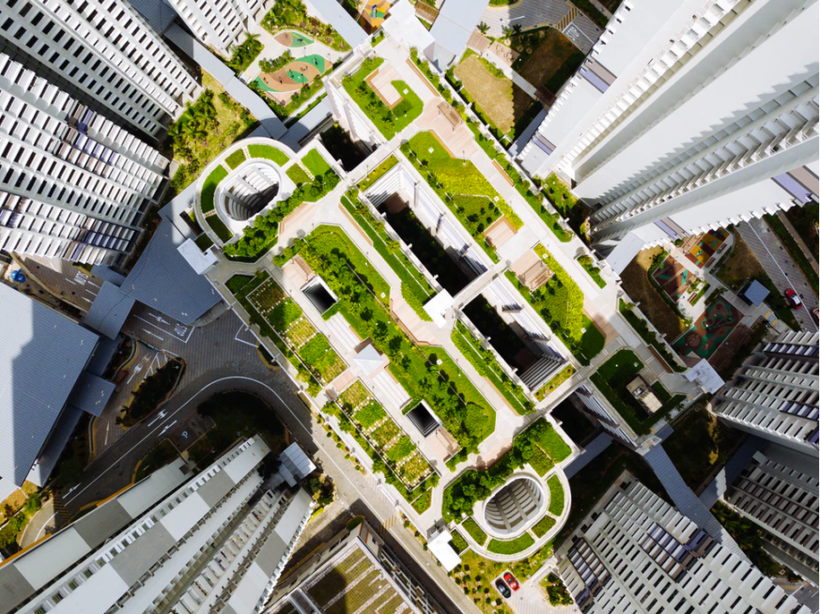
By Adrian Johansen
It is a smart idea to include nature and greenery in thriving cities. Not only does doing so create a beautiful and plush landscape, but you are also providing your residents with the opportunity to exercise, breathe easier, and, on top of it all, you do your part to help the environment through reduced carbon emissions and cleaner air quality.
The benefits prove that creating green spaces in urban areas is a no-brainer, and the best part is that it can be done properly even with limited space. Let’s talk a bit about the benefits of urban greenery and some great ideas that you can start to implement today.
Benefits of Urban Greenery
Although it will take some planning and budgeting efforts, a large city would do itself a favor by having more green spaces through its neighborhoods. Just the idea of a green space is exciting to many residents as an area like a park or walking trail can be used as a place to socialize and get the exercise they often don’t have access to in cramped apartments. Urban greenery projects can also increase property values due to the esthetic characteristics and functionality they provide.
Even more important is the positive environmental impact that urban greenery creates. One great benefit is that greenery and soil help to absorb the carbon that is in the air, which improves the overall quality of the oxygen we breathe and reduces the dangerous impact on our climate.
Plants and greenery can also help to fight off the threat of the urban heat island effect, which is an issue that happens in cities that are composed of mass amounts of pavement. The concrete, cobblestone, and brick that make up our sidewalks and roads hold a lot of heat, and that heat can create many negative effects, from increased air pollutants to reduced water quality. When greenery is introduced, it releases that heat and reduces the risks associated with it.
By introducing green initiatives and city changes, you also create jobs for those interested in sustainability and making the world a better place. For instance, the design and creation of these areas will require urban planners trained in sustainability practices who can see a greenery project through from the design stage to the grand opening. Other environmental experts, including scientists and hydrologists, can also be brought in to look at the current situation and provide options for improvement.
Green Spaces in Our Cities
When you begin thinking about adding more green public places to your cityscape, you want to consider all the details that will make it enticing to your residents. Parks should be placed in the center of a neighborhood that is an easy walk for the residents that surround it. The more greenery, the better, so in addition to grass, plant trees and bushes that will provide refreshing oxygen and shade for the visitors.
Since city space is limited, you sometimes have to get creative, and there is no better way than by incorporating greenery into and on top of office buildings. Encourage companies to put a garden or plant-filled oasis in the lobby of a building. Doing so is quite striking, and indoor plants have been found to reduce stress and increase focus. You can also take advantage of the roofs of those buildings. Green roofs can be composed of large swatches of grass and can include potted trees and plants. Due to the cooling nature of this greenery, these roofs usually last longer and provide natural insulation, which reduces energy costs and our carbon footprint.
City planners would also be wise to take advantage of the small paved areas that we often forget about, such as the strip of concrete that serves little purpose other than to separate the sidewalk from the curb. Instead of that, add grass and plants that offer fruits and vegetables. Vendors can sell the food that these plants produce and use the money to fund more gardens, environment projects, and green spaces. Planting small trees along bike paths can also provide something to look at as they ride past.
Residential Greenery
While most city residents often like the hustle and bustle associated with living in an urban environment, many also like the idea of having more greenery around for them to appreciate. The limited space provided in a city does restrict the possibility, but the space on balconies can be utilized to great potential. Even if you have a very narrow balcony, you can still plant small plants and even grow some of your own vegetables. If all you have is a railing, purchase a rail planter box that can sit on the narrow perch and provide the greenery you desire.
Over the years, there have been many innovations in balcony gardening, and one of the best is the vertical garden. This can either be a pre-made all-in-one vertical box, which is a set of planters that you can fill with your favorite plants and place against a wall, or it can be separate boxes that you install on the wall. Many assembled vertical gardens even have a built-in watering system so you can set it and forget it. This could be an incredibly important attribute if you don’t have the room to get outside and water the plants manually.
Since many people are still working remotely from home, many city dwellers can opt to create outdoor offices if they have the space. The setup can be as simple as using your existing outdoor table set, or you can bring out a standing desk to get extra exercise. The good thing about an outdoor office is that it provides fresh air that can help you breathe easier, and you will also reduce the many distractions that exist indoors. Having plants out around your workspace is always a great idea, as it has been found that houseplants help to reduce stress, boost productivity, and of course, provide oxygen to the world around us.
Yes, it is possible to see lush, green beauty in a city landscape. With some planning and imagination, your city could become a happier and more environmentally friendly place.
Adrian Johansen strives to prioritize sustainability and ethics in all she does. To that end, she writes in multiple fields, applying and promoting sustainable methods and ideals as much as possible. You can find more of her writing here.
Image Source: Unsplash



Leave a Reply